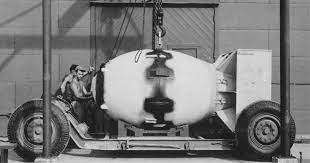The Manhattan Project stands as one of the most significant scientific and technological endeavors of the 20th century. Spanning from 1939 to 1945, this top-secret research and development project aimed to harness the power of nuclear fission and ultimately led to the creation of the first atomic bomb. The project’s profound impact on warfare, geopolitics, and global security cannot be overstated.
Motivated by fears that Nazi Germany was pursuing atomic weapons, the United States initiated the Manhattan Project under the guidance of physicist J. Robert Oppenheimer. In collaboration with leading scientists, the project was headquartered in Manhattan, hence its name. The effort drew upon the combined expertise of physicists, chemists, engineers, and mathematicians from across the globe.
The crucial breakthrough in nuclear fission came in 1942 when physicist Enrico Fermi achieved the first controlled nuclear chain reaction at the University of Chicago. This pivotal moment propelled the project into high gear, and work rapidly expanded to multiple secret research facilities, including Los Alamos, New Mexico.
Intense research, experimentation, and testing culminated in the Trinity Test on July 16, 1945. Located in the New Mexico desert, the Trinity Test marked the first detonation of a nuclear device. The successful explosion solidified the viability of the atomic bomb and set the stage for the subsequent use of this devastating weapon.
Less than a month after the Trinity Test, the United States dropped atomic bombs on the Japanese cities of Hiroshima and Nagasaki in August 1945. These bombings resulted in immense loss of life and unparalleled destruction. The bombings also compelled Japan’s surrender, effectively ending World War II.
The Manhattan Project was an unparalleled scientific achievement, but it also raised profound ethical and moral questions. The development and use of the atomic bomb ushered in the nuclear age, forever altering the geopolitical landscape. It sparked a nuclear arms race between the United States and the Soviet Union, setting the stage for the Cold War.
The legacy of the Manhattan Project and the atomic bomb continues to shape the world today. The destructive potential of nuclear weapons prompted a global effort to control and limit their proliferation, leading to the creation of the Non-Proliferation Treaty in 1970. The project’s scientific advancements also laid the groundwork for peaceful nuclear applications, including energy generation and medical treatments.
In conclusion, the Manhattan Project’s relentless pursuit of harnessing nuclear energy resulted in the creation of the first atomic bomb. This groundbreaking achievement forever altered the course of history, triggering geopolitical shifts and raising profound ethical questions. The project’s legacy serves as a reminder of the immense power and responsibility associated with scientific progress.
newshub


Recent Comments